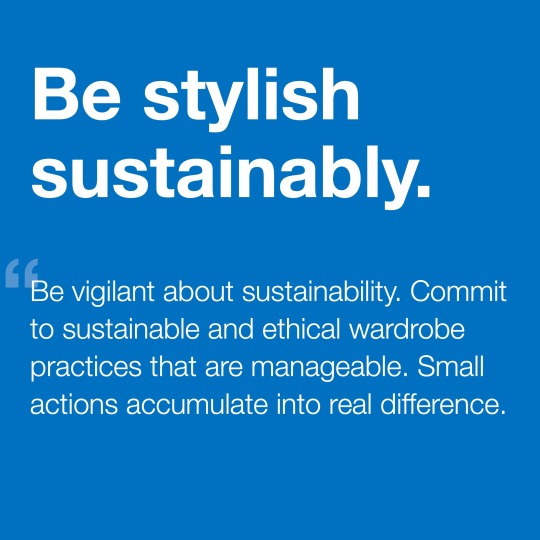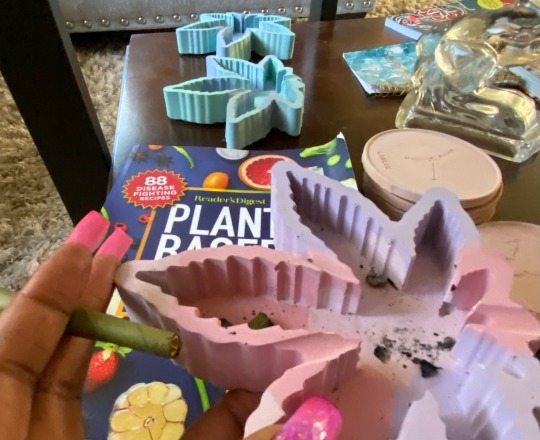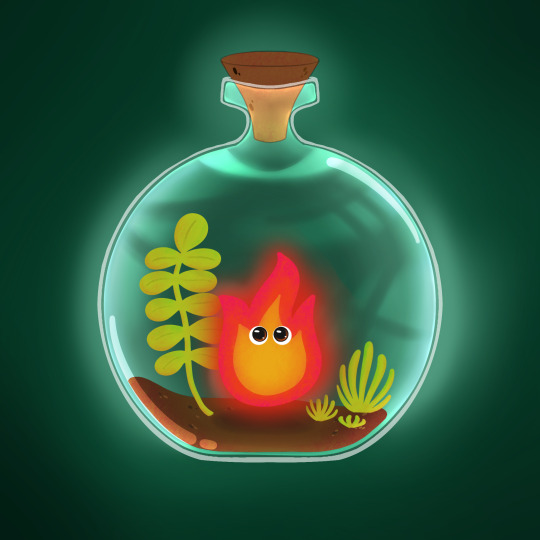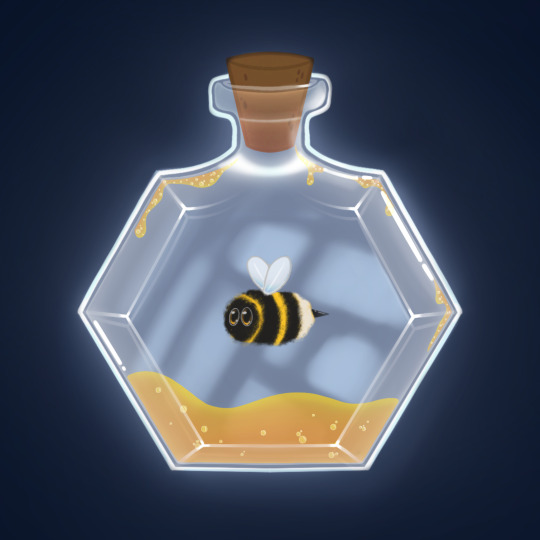#Environmentally friendly
Text
i feel like i’m going insane, sustainability does not equal minimalism. neither does buying a bunch of overpriced shit that claims it’s “ethically sourced”. you know what’s sustainable? fixing shit around your house. thrifting. patching clothes and handing them down. a community garden. potluck dinner parties. farmer’s markets. a barter system among friends and neighbors. kindness. love among community members. capitalism is not sustainable, both in the environmental sense and the longevity sense.
like. buying from small businesses is a good place to start. as is larger businesses being as close to carbon neutral as possible. but materialism is what’s driving us as a planet into an early grave
#anarchism#socioanarchism#solarpunk#ecopunk#/srs#/gen#not a shitpost#sustainability#environmetalists#environmentally friendly#environmentally conscious#small businesses#punk#being kind is punk
3K notes
·
View notes
Text
A lot of stuff I hear in sustainability circles is oh, I still live at home what can I do?
Besties there is so much you can do.
You got chores? Dishes one of them?
You can fill up the sink with water and wash with just that. Less water than constantly running
I find that gross but my grandma does it. When I do dishes I use a jar with a drop of soap, fill it with water, and dip my scrub brush in that so I'm not wasting soap.
Dry dishes with a towel
Air dry your dishes
You can also ask if you can keep a potted plant (edible plants are bonus points) or a garden
Also bonus points if you use food scraps for a garden. That's a whole topic for another post another day but seriously look into it
Or you can trade plants with friends and neighbors
Or steal cuttings
You can wash your clothes on cold, ask if you can hang dry your clothes
You can use eco friendly laundry detergent, or just start using the actual amount needed. That stuff is so concentrated it isn't even funny
Use reusables whenever you can
Try to eat less processed foods
Try to eat more plant based
Try to limit your car trips
Take walks and pick up litter
Go to the beach and pick up litter
Bonus points for separating recyclables
Learn to repair your clothes, a basic sewing kit should be all you need for simple mends
Shop at yard sales, thrift shops, second hand, or local
Shampoo bars
Soap bars
Yes including hand soap
Weave baskets out of toilet paper rolls. No idea how you do it but I've seen it and they look pretty cool
Learn an "old fashioned" skill, like spinning yarn, canning, gardening, basket weaving, wood carving, etc
Try to be creative!! So much about Solarpunk and sustainability is about being creative with your solutions
#solarpunk#environment#sustainable#environmentalism#environmentally friendly#practical solarpunk#eco friendly#low waste#low waste living#reduce reuse recycle#practical zero waste#zero waste living#zero waste in the city#zero waste#low impact#ecofriendly#environmental#sustainable craft#sustainable diy#sustainable living#sustainability#sustainable tip
729 notes
·
View notes
Text
Eco-Friendly Tip:
Clothes and shoes aren't supposed to be thrown in the trash. If you have clothes and shoes that are just too worn out to sell, donate, or give away; take them to a textile recycling centre. If you don't have one nearby, many thrift shops and related charities can find a way to recycle them for you.
5 notes
·
View notes
Text

Garden is overrun with pioneering volunteer species and the soil is mostly clay, but I picked these (wild radish) for some backyard salad foraging.
Image description. A lightly tanned left hand in a white linen sleeve holds a metal colander one third full of white and pastel purple four petaled flowers and bright green seed pods. It is golden hour, and tall plants of the the flowers, wild radish, take up the majority of the frame around the colander. The top fifth of frame has cloudless blue sky.
#thefifthacre#gardening#garden#garden witch#witchcraft#green witch#jewish magic#jewitch#jewish homesteading#ecoconscious#environmental#environmentally friendly#budget#cost savings#planet savings#save the planet#save the environment#solar punk#invasive plants#eat your invasives#wild radish#zone 9#zone 9b#forage#foraging#california foraging#ghiblicore#cottagecore#thrifty#not actually cottagecore myself just poor and thrifty
28 notes
·
View notes
Photo

Strive for Sustainable Style - YLF
#sustainability#environmentally friendly#vigilance#commitment#ethical practices#wardrobe#manageable#make a difference
4 notes
·
View notes
Text
Pseudomonas aeruginosa
Polyethylene plastic, found in products such as plastic bags, water bottles, and food packaging, takes 1,000 years to dissolve naturally.
The RPI team tackled the challenge of engineering this bacteria to convert the carbon atoms of polyethylene into a genetically encoded silk protein.
Polyethylene is particularly problematic, as it is commonly found in single-use applications. Resultingly, polyethylene is the most commonly produced plastic, representing 30% of all plastics production
Mechanical recycling is inefficient, typically yielding materials that have inferior mechanical properties compared to virgin plastics.
The development of a new strain of Pseudomonas bacteria capable of converting depolymerized polyethylene into high value bespoke recombinant protein products.
3 notes
·
View notes
Text

@ my stoner friends , I’ll handpour a concrete ashtray for you 💖
#@ my mutuals#I love you#support your local trapper#yes#peep the coaster#cancer#gang shit#shop now#environmentally friendly#free shipping
4 notes
·
View notes
Text
One area has been reducing the use of volatile organic solvents and replacing them with ionic liquids (see figure 18.13).

"Chemistry" 2e - Blackman, A., Bottle, S., Schmid, S., Mocerino, M., Wille, U.
#book quotes#chemistry#nonfiction#textbook#green chemistry#environmentally friendly#volatile organic compounds#solvents#ionic#liquids#cation#anion
3 notes
·
View notes
Text

Get out on your bike this Summer!
#illustration#ross becker#design#graphic#editorial#editorial illustration#cycling#bike#bicycle#environmentally friendly#eco#eco friendly#bike ride
8 notes
·
View notes
Text

Our picture of the week is the stunning "Hillside House" in the Pacific Northwest. This post and beam log home sits on the side of a hillside, with a gorgeous summer garden and playground! What a beautiful place to live!
#log home builders#log homes#post and beam#handcrafted log homes#naturally passive homes#build better#clean building#environmentally friendly#no prefab here
5 notes
·
View notes
Text
Today I got to pet a miniature guard donkey
Just thought you (my 27 followers and the abyss of the internet) should know
Highlight of the year

Visit to a small holistic farm
#sustainable#sustainable farming#holistic farm#environmentally friendly#environmentally friendly farm#personal#positivity#donkey#small animals#animals#farmblr#farm
31 notes
·
View notes
Text
Here's how my grandma and I try to live a low waste lifestyle in the city
First thing is we reuse everything. We have a portion of our shelves dedicated to holding plastic food containers we have washed and are waiting to be used to hold leftovers, dried foods, as seed starting pots, etc. We also save any and all jars to hold dried herbs and food products.
Actually reuse is a big thing for us. We shop at places that use paper bags, which I then cut up to use as scrap paper for grocery lists, etc and then compost after that. We also have a small container with rubber bands from products, bread ties, etc.
If you can afford the start up costs and have the space, preserving your own food is excellent. We have a really small garden that produces a lot of food every year. My favorites are dehydrating (using a dehydrator that is at least 30 years old from back when my grandpa was into making jerky), freezing, and canning.
Also, use every bit of food. Right now in the freezer I have bags of apple cores and peeling, pear cores and peeling, and peach peels along with bags of bones and veggie scraps for broths. The fruit scraps will go towards making big batches of jelly when canning season is over. I'll probably use the pulp leftover to dehydrate and powder to add to baked goods following a success with crabapple jelly pulp. I've also made spaghetti sauce out of tomato peels. Anything rotting or absolutely unusable gets tossed in the compost.
Reusables!! Obviously in today's world you can't avoid plastic but you can reduce how much you use. We use reusable produce bags that I made out of scrap Tulle, reusable grocery bags, water bottles, ziploc bags, etc.
If you have a yard or space, composting is a big one! My grandma says she never realized how much food we tossed until we started one. You don't even have to spend money on it! I know people who use totes they drilled holes into, just toss it In a hole in their garden, etc. The one I use is an old hose winder (one of those cube ones( that broke and my work was going to toss. All I did was cut out the hose winding part and paint it pretty and it's held up for 2 years and counting so far.
Hang dry clothes. In summertime we almost exclusively dry our clothes on a line or on a clothes drying rack I found at a yard sale.
Keep your heat or ac a few degrees higher or lower depending on the season. This helps save energy being used to heat or cool your house.
Wash clothes in cool or cold water. I've been doing this for years and haven't noticed a difference.
Repair. You don't have to be a sewing genius to quickly repair a small tear, especially if it's just for household wear. A great winter time hobby to pick up when gardening season is over.
Trade! This can be as simple as hosting a clothing swap all the way up until trading items u grew/made for items they did! I barter with my coworkers all the time, just talk to them! I never would have known my coworker kept bees if she didn't really like my jellies and proposed a trade. I also trade any of my soft produce I don't have time to do anything with to my coworker with rabbits in exchange for poop for the garden.
Try to be in season from local sources such as garden stands, or just a local grocery store. One of our local farms grew bell peppers and was selling then 2 for a dollar! So we stocked up and dehydratedand froze lots of peppers for winter stews
Blended pumpkin guts makes an excellent pumpkin puree, even if you're just adding little bits of it to your dog's food :)
You can freeze a lot of stuff! Leftover spaghetti sauce, pumpkin puree, etc can all be frozen in a muffin pan and then put in bags for future use!
Forage! I personally mostly forage for greens and a few mushrooms I am confident in my ability in but that still bulks up your food supply as well as medicine supply! I made a salve using bartered beeswax and spring purple dead nettle and summer plantain (and some tea tree EO) for cuts and scrapes and it works miracles! My coworkers love it as well as friends and family
We really try to live by the waste not, want not and use it up, wear it out, make it do, or do without phrases. Just figure out what works best for the life you live! Be creative!
#solarpunk#environment#sustainable#environmentalism#environmentally friendly#off grid living#cottagecore#goblincore#zero waste#zero waste living#low waste living#low waste#practical zero waste#zero waste in the city#eco friendly#eco friendly living#reduce reuse recycle#reusedmaterials#reuse#practical solarpunk
811 notes
·
View notes
Text




Most recent digital pieces (made into badges) to be sold soon hopefully!
#art#artists on tumblr#drawing#artwork#digital art#procreate#i tried#bottle#cute#environmentally friendly
3 notes
·
View notes
Text
fun facts with Sahar, because no-one told me!
I line dry my family’s clothes as much as possible to save money (less electricity and less wear on the clothes), to sunbleach stains (two toddlers), and for the environment (less manufactured energy more wind and solar passive energy). In summer it also helps cool my home like a swamp cooler.
I installed a new laundry line with a fancy pulley system so I can hang while standing in one spot. The usual cotton rope I buy wasn’t available at the store, so I bought sisal rope - apparently more sun resistant, and it’s not plastic. I hung it on an overcast day. A week later, I had to tie a slip knot in it and pin it because it was too slack.
The next day, it rained.
Sisal swells in moisture.
The hook I used to hang my pulley was unhooked by the sheer tension and the whole thing collapsed in freshly forked dirt. Even untying the slip knot was not enough to rehook it. I installed a new hook and used some chained up carabiners to rectify.
So here is the proper way to install a laundry line, particularly for sisal:
Ensure the drill is drilling in (not out), and using a ladder or otherwise boosted drill a pilot hole with a screw shorter than your hook into a solid support. I used a fence post and a shed roof on a post.
Screw a heavy duty hook in to the support. Repeat between 20 and 100ft away with another pilot hole and hook.
Hook the pulley assembly onto the hook, then run the rope around it. Gently pull it to the other hook and repeat with a second pulley. Tie into a big loop using a square knot, so the tension on the knot pulls it tighter instead of loosening once you have weight on it.
Using split rings made into a chain, or a length of chain that can fit over the hook, attach a chain to the hole in the pulley assembly with a carabiner. I recommend about 18 inches of chain. This should be at the spot you intend to stand while hanging laundry. ALWAYS STORE ON THE LOOSEST CHAIN LINK.
On a particularly dry day, go out and loop the carabiner to the hook. Retie your laundry line to its tightest. Rehook at end of chain so there is lots of slack in case of high humidity.
When hanging laundry, unhook chain and rehook at appropriate chain link or carabiner for the day’s humidity to be taut but not overtight. Every item or three you hang on the line, attach a carabiner to the lines. This helps keep the two lines of the loop together instead of tightening the empty top and slackening the loaded bottom.

Empty line, ready to hang laundry.
Image description: a closeup of a plastic laundry pulley on a sunny day, parallel to a fence with scraggly bushes. Another house and blue sky is visible in the background. The pulley is looped with sisal rope tied in three square knots with a curled 8 inch tail. Close to the pulley are black, brown then red to purple carabiners in rainbow order. The pulley is attached to a silver carabiner, which is in turn looped onto a white plastic covered hook screwed in to a 4x4 wooden post. A chain of 18 metal split rings dangles from the carabiner. The line has a slight parabola but is clearly taut.

Empty laundry line, ready to hang.
Image description. The same laundry line, taught with a slight parabola, at a different angle. The viewer is looking at a simple square blue grey shed that has the other end of the laundry line hooked to the far left roof corner. From right to left in background are visible a bush blooming with dark purple flowers, five tall skinny cypress trees, the shed, a mass of overgrown wild radish and a yellow blooming succulent, oak trees in full dark foliage, and some empty garden beds. The sky is bright blue and cloudless.

The line at rest, ready for storage.
Image description. The same laundry line at the same angle looking at the shed. The chain is visibly hooked at the furthest end from the pulley so the line has a deep slack in it.
#thefifthacre#gardening#garden witch#garden#witchcraft#green witch#jewish magic#jewitch#stitch witch#stitch witchery#ecoconscious#enviromental#environmentally friendly#budget#cost savings#planet savings#save the planet#save the environment#solar punk#cottagecore#not actually cottagecore myself just poor and thrifty#thrifty
7 notes
·
View notes
Photo

Little pictures I drew for ‘re-using old aquarium’ graphics. I just think they’re cute all together like that.
19 notes
·
View notes
Text
The researchers examined 10 bioenergy cropping systems in an experimental array in Michigan
Annual crops
Simple perennial (multi-year) systems
Diverse perennial systems (reconstructed prairie, successional volunteer vegetation, and a short-rotation coppicing system with poplar trees).
Diverse perennial systems (reconstructed prairie, successional volunteer vegetation, and a short-rotation coppicing system w
Some of them are more productive, but have little conservation value
others, while less productive, have conservation benefits
Crops grown for energy is a likely source of major landscape change in coming decades during the transition from fossil fuels. But farming these crops have
The biodiversity impacts of widespread bioenergy adoption are mostly negative and can be large when they encroach on natural areas.
So, studying different planting methods could reduce the impact on the environment or even benefit biodiversity.
3 notes
·
View notes